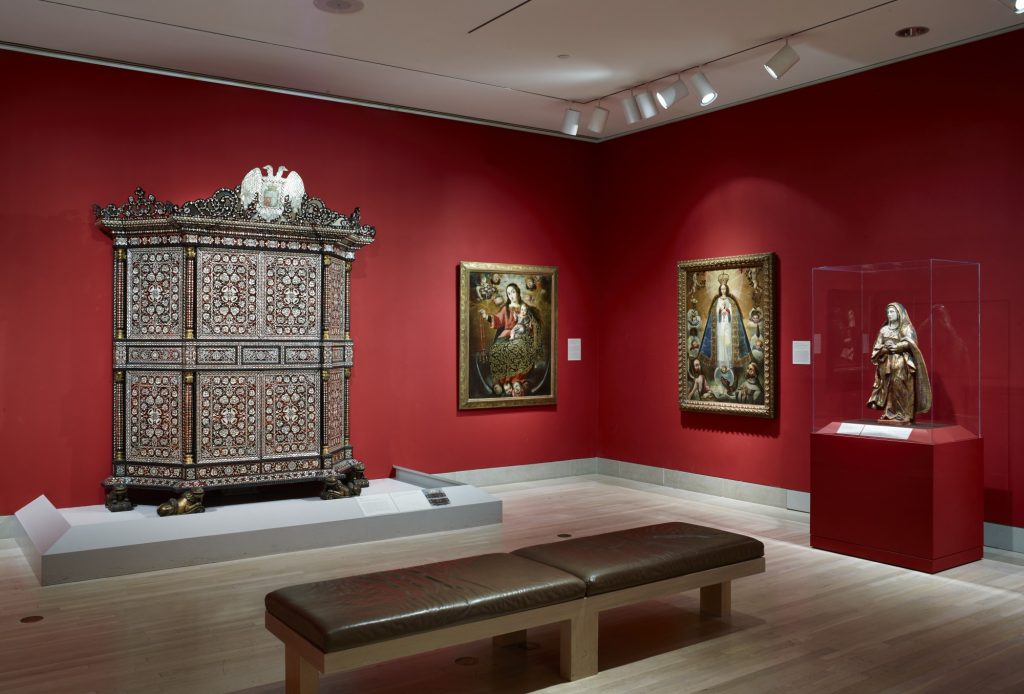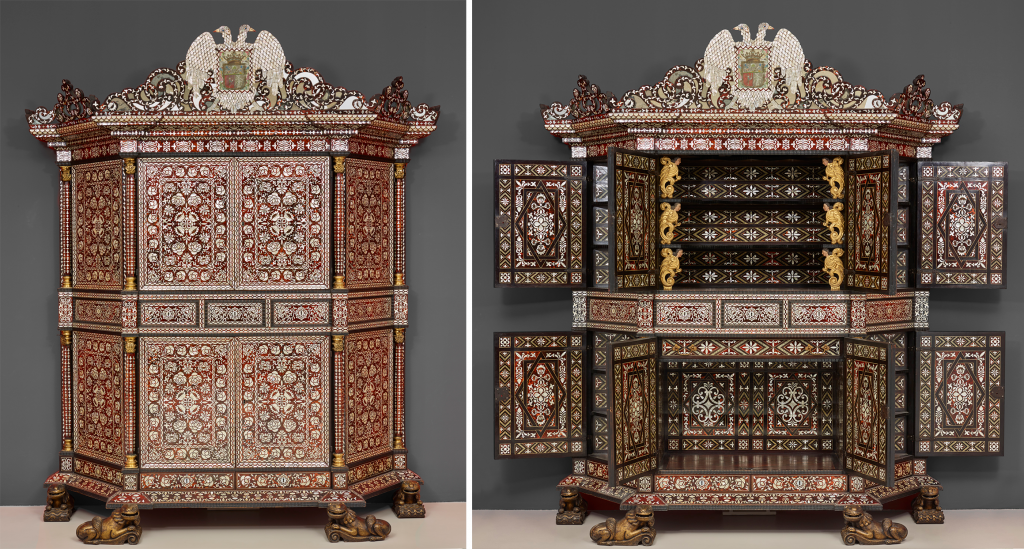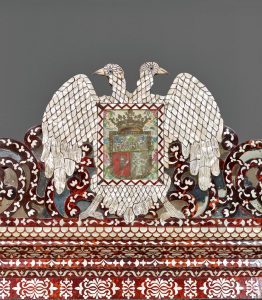
This opulent cabinet is among the Dallas Museum of Art’s most glittering masterpieces—and one of my favorites. The marquetry and inlay that cover its exterior and interior is composed of thousands of intricately fitted pieces of mother-of-pearl and tortoiseshell, further accentuated with ivory and gilt wood elements, as well as brass wire and nails. This extravagant use of precious materials over the cabinet’s surfaces creates a sense of unrestrained luxury, signaling the wealth and status of its owners.
Scholars once believed that the cabinet was made in Goa, India, or perhaps in Manila, Philippines, but recent studies have revised that thinking. We now place its production in Lima, the capital of the Viceroyalty of Peru during the Spanish viceregal period. This is in part because of the abundance of furniture with this style of decoration—writing desks, sewing boxes, chests, etc.—that can be found there today, in churches and in private collections.

Lima was a regional and global trade hub at the end of the 17th century. This gave furniture makers access to a wealth of precious materials, such as Spanish cedar and Central American hardwoods, which were often used for the interior structures of cabinets like this one. The precisely cut pieces of mother-of-pearl and tortoiseshell may have also been imported, perhaps shipped in pre-cut standardized shapes.
Existing literature says the cabinet once belonged to Melchor Portocarrero, the third count of Monclova; I have found no concrete proof of this but am intrigued by the legend. It was thought that he commissioned the piece from Goa or Manila while living in Mexico City and acting as the viceroy of New Spain (1686–88), later taking the cabinet with him to Lima when he became viceroy of Peru (1689–1715). If the cabinet did belong to the count of Monclova, it now seems more likely that he commissioned the work directly from a workshop in Lima. Almost nothing is known about the furniture makers in Lima during this period, although there were almost certainly specialized makers dedicated to this style of decoration.

One important clue in the cabinet’s history can be found on its crest, which contains a painting of the coat of arms of the marquises of Torre Tagle, set in a double-headed eagle decorated with mother-of-pearl. Granted their title by King Philip V of Spain in 1730, the Torre Tagle family were prominent members of Lima’s aristocracy. The third marquis of Torre Tagle married a descendent of the count of Monclova, which was long thought to explain how the cabinet came into the family’s possession. It is possible, however, that the work’s original commissioners were the marquises themselves.
So, while there is much that isn’t known about the cabinet, the DMA is working to unlock its secrets. In the meantime, it remains the grandest example of this style of furniture in a public collection anywhere in the world, and one of the highlights of the Museum’s Level 4 galleries.
Take an inside look at the cabinet here:
Dr. Mark A. Castro is The Jorge Baldor Curator of Latin American Art at the DMA.